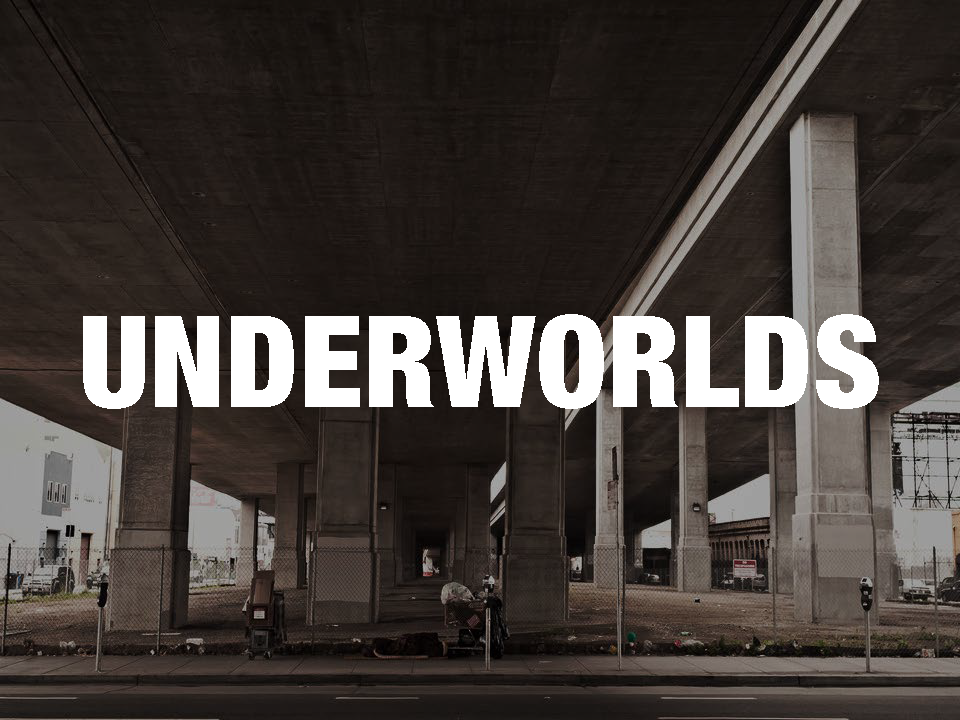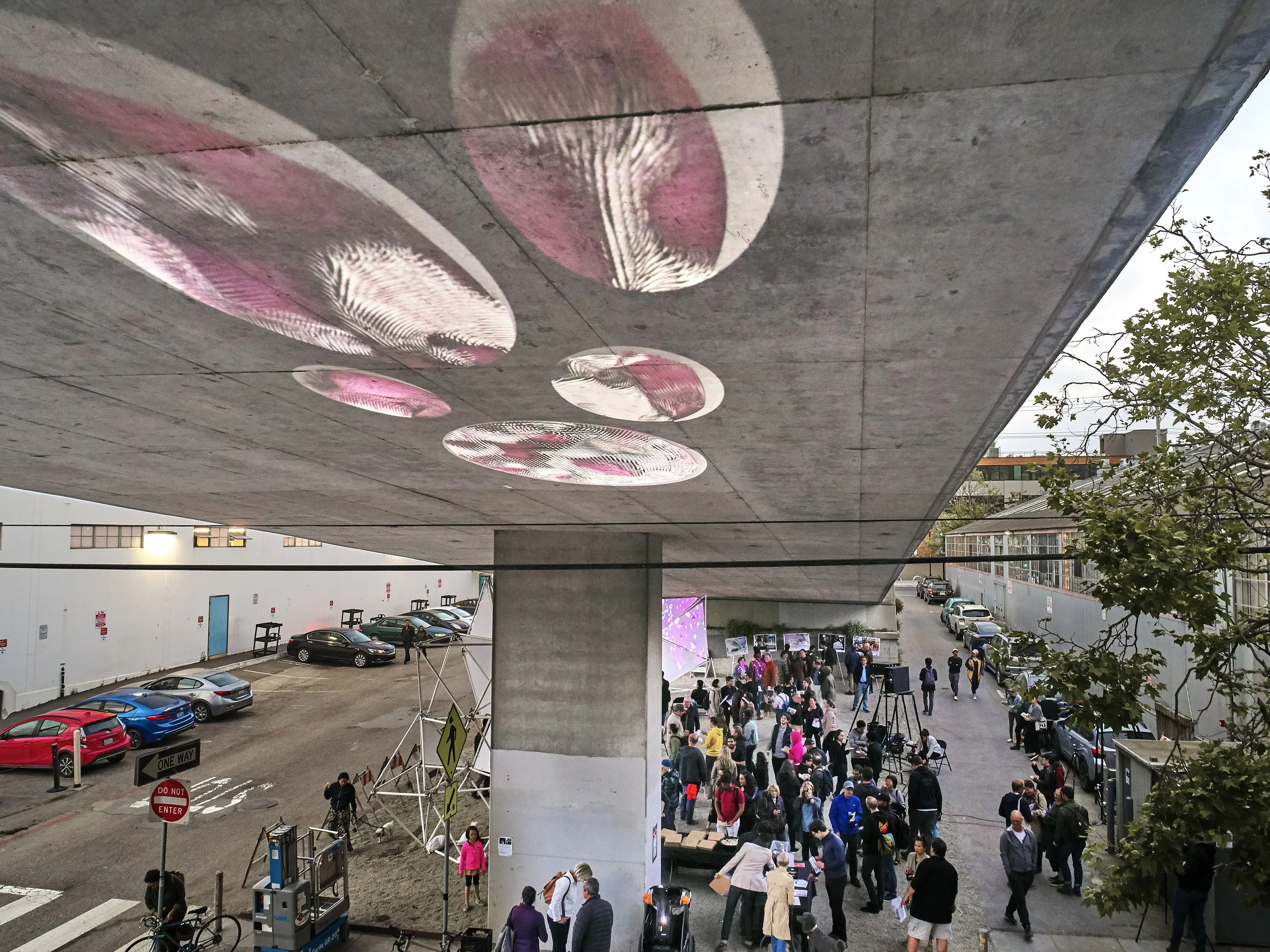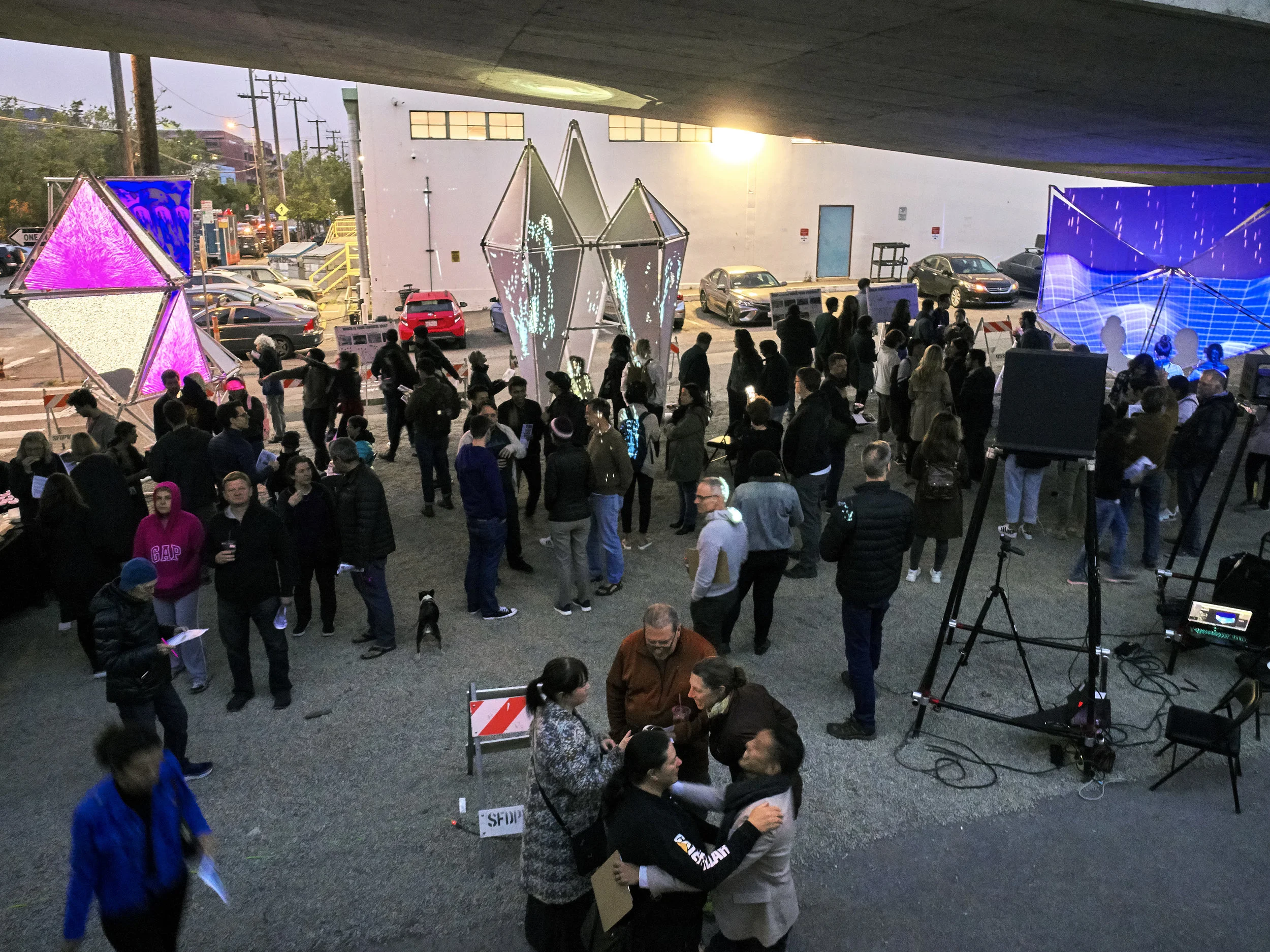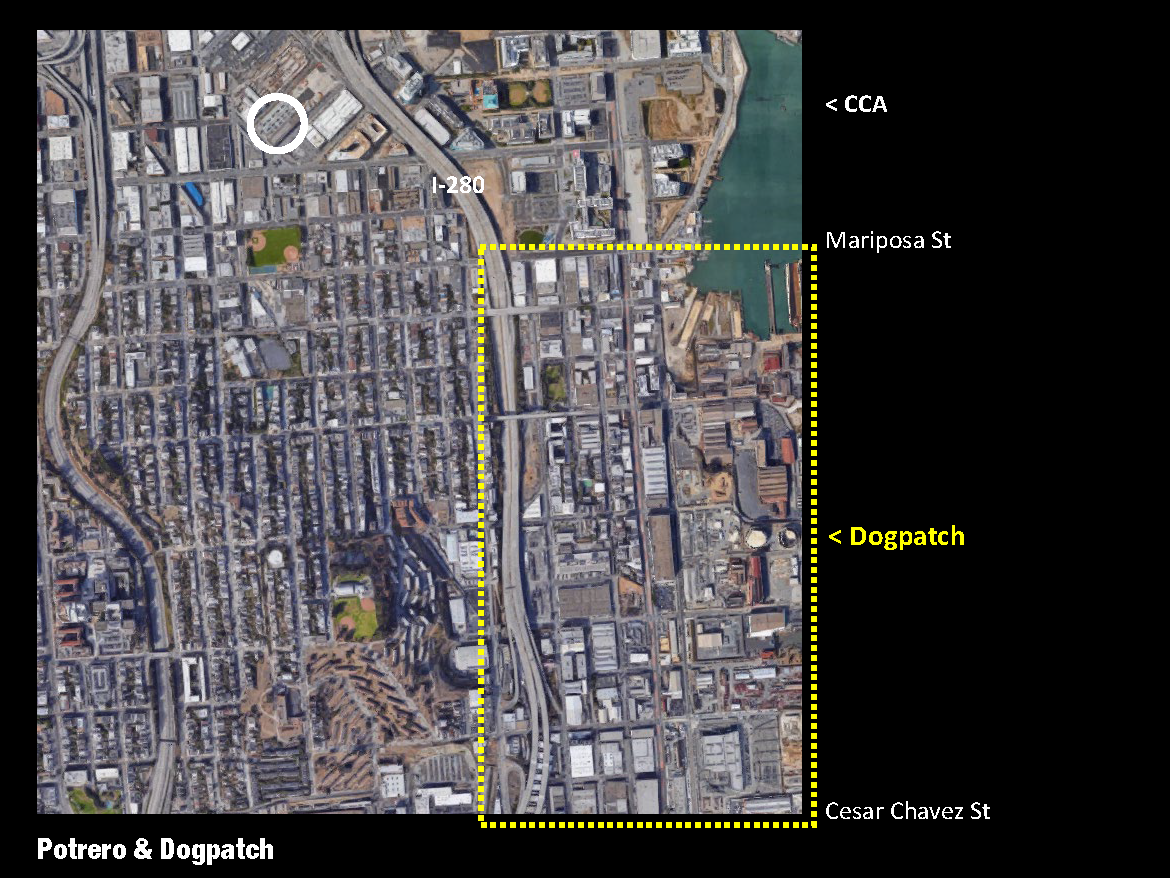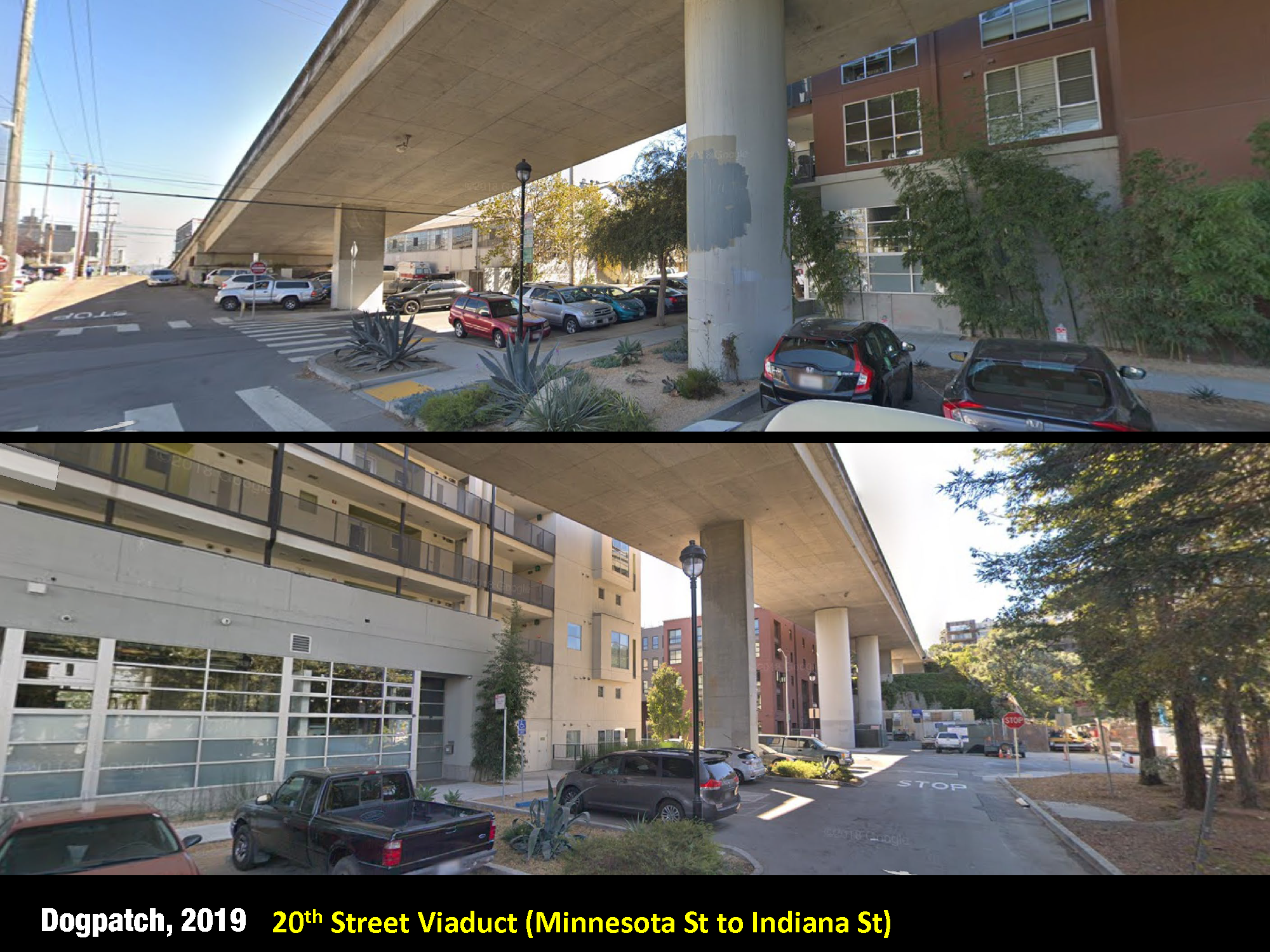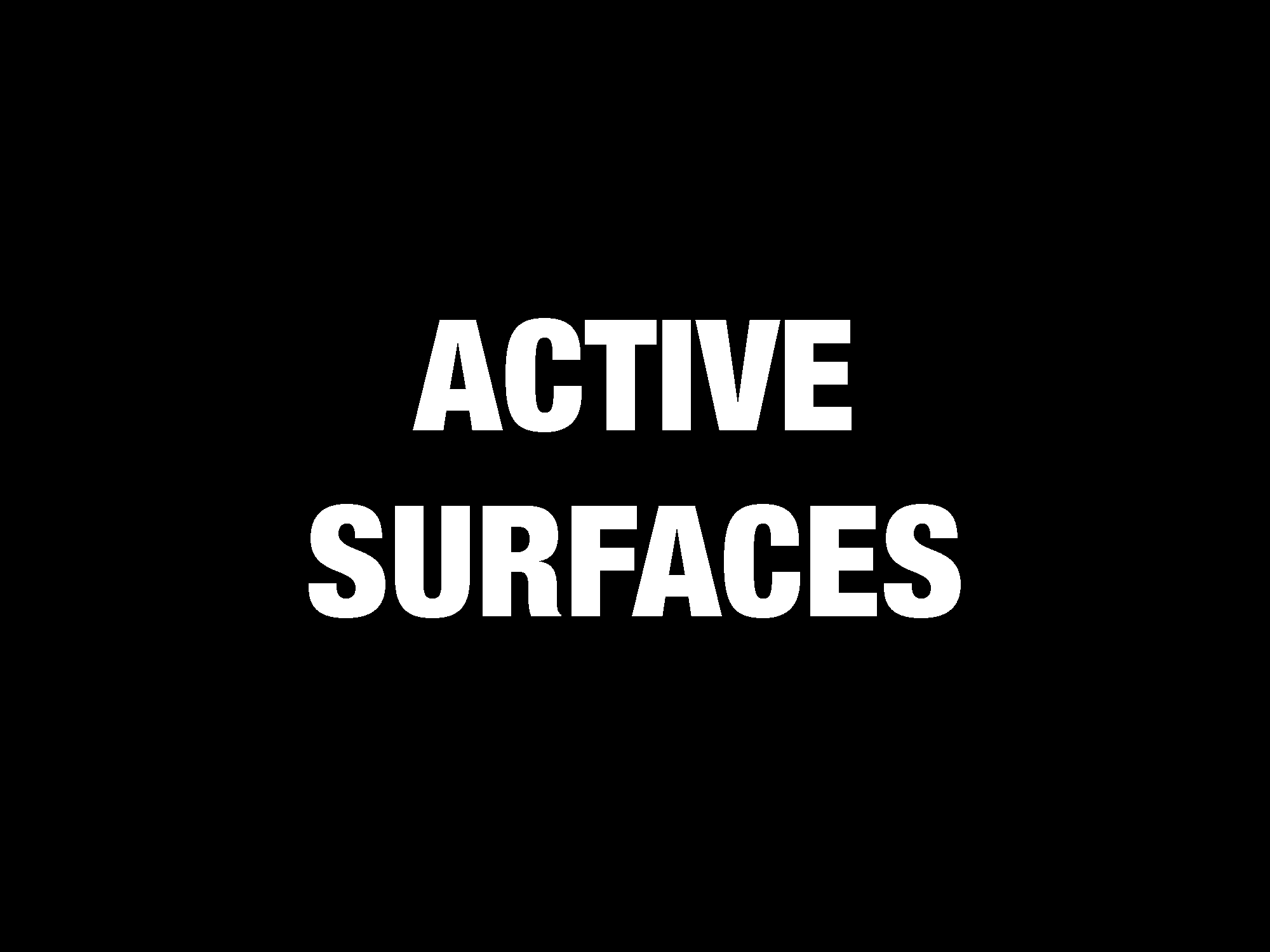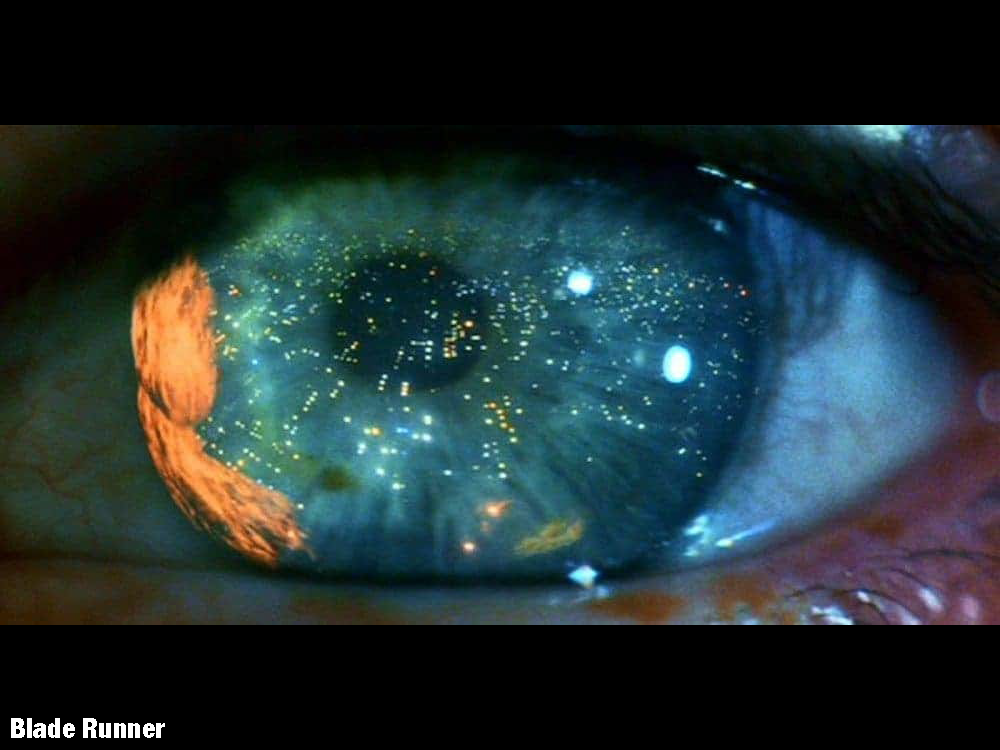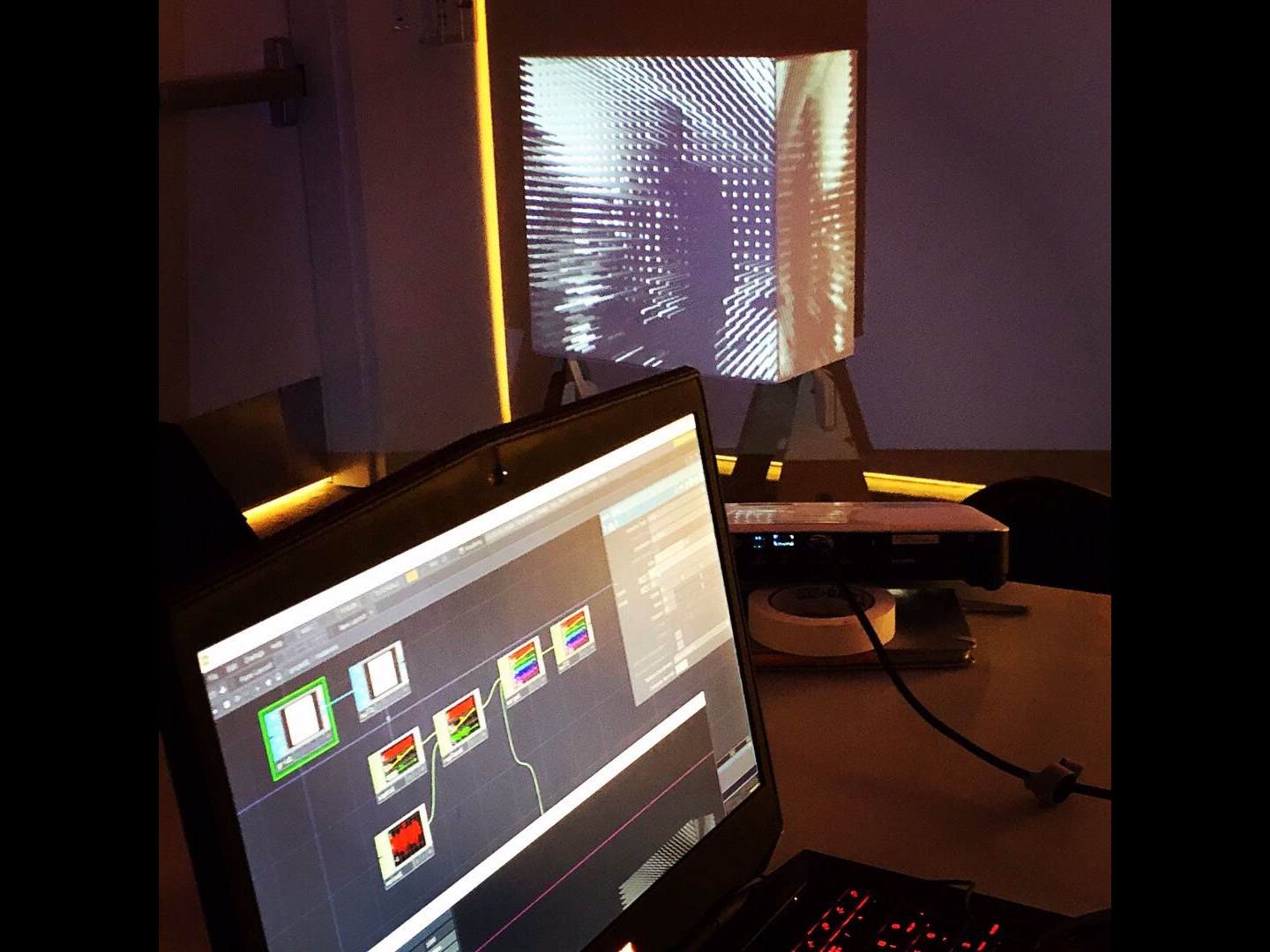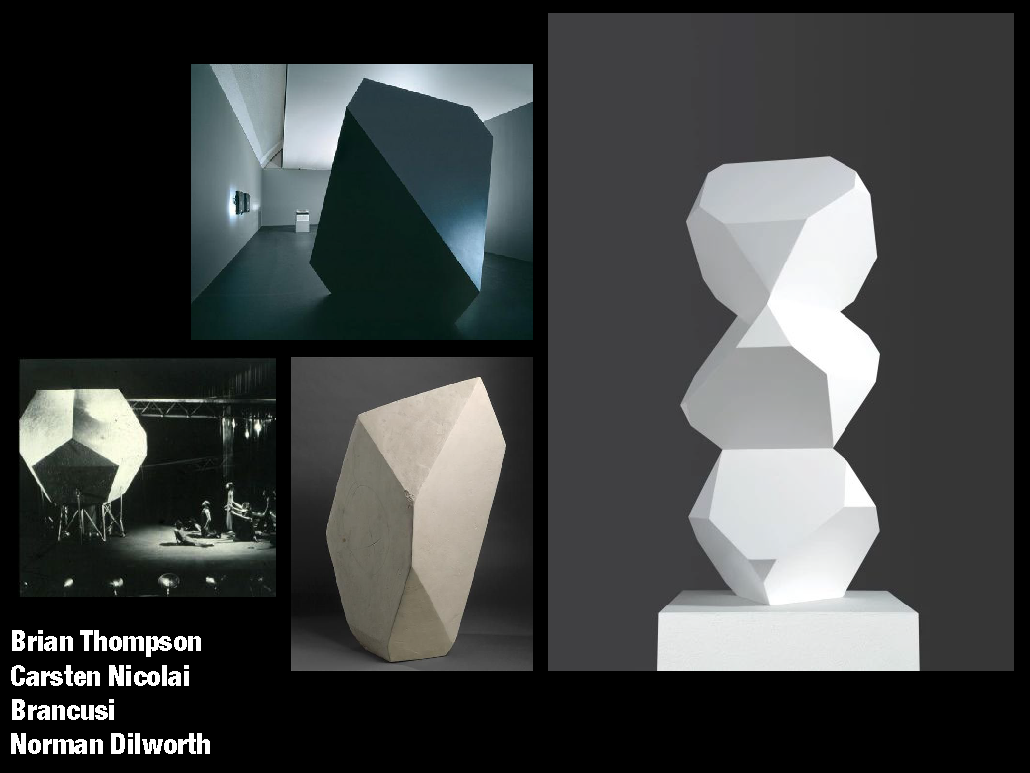Core Faculty: Associate Professor Jason Kelly Johnson (CCA + FUTUREFORMS, with Robin Abad (SF Planning, Senior Planner)
Date: Spring 2019
“A photograph is a universe of dots. The grain, the halide, the little silver things clumped in the emulsion. Once you get inside a dot, you gain access to hidden information, you slide into the smallest event. This is what technology does. It peels back the shadows and redeems the dazed and rumbling past. It makes reality come true.” ― Don DeLillo, Underworld
“If objects are viewed as nothing but blank screens on to which linguistic fantasies are projected, we miss the tension in objects between their identity as one thing and their swirling manifold of spots and stripes where the connoisseur finds points of entry.” ― Graham Harman
LOTTERY PRESENTATION
PDF version of Jason’s Lottery Presentation
BRIEF
The UNDERWORLDS studio will focus on exploring strategies to activate the I-280 corridor “underworlds” and adjacent viaduct properties in the San Francisco Central waterfront neighborhoods (Potrero Hill, Dogpatch, Islais Creek). Our primary medium will be to use light installations and projection prototyping in experimental ways to illuminate and energize these challenging spaces in new and innovative ways. Students will construct a series of large lightweight geometric objects (“transformers”) that will be temporarily installed at various underpass sites. Student fabricated mobile high-lumen projection units will then animate these objects with light and sound in a series of both guerilla and public performances.
CONTEXT
In the 1950’s and 60’s there was a surge in building super highways through the hearts of America’s cities. From Richmond, Virginia, to San Francisco and Oakland, California, mostly low-income neighborhoods were cleared to make way for transportation infrastructure. Today, many cities continue to struggle with the negative impact of these constructions. In contrast to what was constructed in these cities, Jane Jacobs fought and won against the city official Robert Moses - the mastermind of the so-called LOMEX highway mega project that was to be built through her lower Manhattan neighborhood. Jacob’s famously wrote in The Death and Life of Great American Cities, “The more successfully a city mingles everyday diversity of uses and users in its everyday streets, the more successfully, casually (and economically) its people thereby enliven and support well-located parks …” and “...frequent streets and short blocks are valuable because of the fabric of intricate cross-use that they permit among the users of a city neighbourhood.”
PROVOCATION
Today there is a growing interest in experimenting with ways to inject Jacob’s ideas, and the ideas of a new generation of citizens, back into these sites: to hybridize and weave a diversity of uses into the city - to cultivate intricate places with social, cultural, political and ecological impact.
How can a shift in thinking about transportation infrastructure, from mono-functional corridors to diverse, layered, heterogeneous spaces, help make the city more liveable and active? What are the new possibilities for integrating non-traditional urban design, art, technology, architecture, landscape, experimental modes of participation and collaboration, inclusion and public discourse? What are the possibilities if we expand the definition of what public space is, where it can be, and who it might serve?
PRECEDENTS
While Seattle just began the process of tearing down its central viaduct, there are some excellent examples of cities that have transformed transportation infrastructure into cultural and/or ecological assets. In Manhattan the most famous examples are the extraordinary Highline and the Lowline, in New Orleans there is the acoustic paradise of Claiborne Avenue, while in Philadelphia the Reading Viaduct has been transformed into an urban oasis. Seoul Korea recently transformed a 1970’s era highway into an elevated park called the Skygarden featuring over 24,000 trees, flowers, koi ponds and cultural programming. In Tokyo, near the Yurakucho Station, the spaces under the elevated train tracks are packed with bars and sushi restaurants, and in Paris the so-called La Promenade Plantee transformed a former urban railway into an elevated park and bustling commercial ribbon. San Francisco’s viaducts remain virtually intact from the day they were constructed: mostly barren, wind-swept spaces, more associated with crime than culture. How could these spaces be woven back into the pedestrian life of the city? Could they be illuminated, safe and active spaces for creative production and discussion?
SITES
The studio will initially explore a roughly one-mile long viaduct corridor along the underside of San Francisco’s I-280 from Mission Bay (immediately behind CCA), through the Potrero and Dogpatch neighborhoods, to Islais Creek (near Cesar Chavez St). We will map key intersections and opportunities, examine possible programmatic hybrids and strategic transformations, and propose new visions for creative intervention.
INTERVENTIONS
Secondly, we will zoom into 3 key sites midway along the viaduct corridor in the Dogpatch neighborhood. During this phase we will consider specific ideas for short, medium and long-term activation and transformation. Lastly, one underpass site will be utilized for an end-of-semester pop-up activation evening event. The studio will design, plan, install and host the event with local community partners. This event will allow us to study our ideas though constructing in situ live projection mapped interventions with real clients (neighbors, friends, folks just passing by) in a real place.
KEY DELIVERABLES
1. PROPOSALS TO CREATE A NETWORK OF ACTIVATED UNDERPASSES
2. PHYSICAL INSTALLATIONS TO TEST IDEAS AND ITERATE IN SITU
3. STAGE A POP-EVENT TO EXHIBIT IDEAS AND GET FEEDBACK
STRUCTURE & SPRING 2019 SCHEDULE
Phase 1: Mapping the Underworld (+ technical workshops using TouchDesigner)
Phase 2a: Underworld Activation Proposals (+ projection experiments)
Phase 2b: March 12, 20, 21 - Community Engagement in Dogpatch
Phase 3: Immersive Installation Prototyping (+ event planning)
April 25: 7:30-9:30pm Pop-up Evening Event @ 20th St & Minnesota St Underpass
May 4: 2-4pm Final Review Exhibition and Discussion @ CCA Nave Alcove
TAGS
#ccaunderworlds #sfplanning #CCA #dogpatchsf
Sponsorship: SF Planning (see: Central Waterfront / Dogpatch Public Realm Plan)
Supporting Partners: CCA Digital Craft Lab, NW Potrero / Dogpatch Green Benefits District (GBD), SF Department of Public Works (DPW)
Support: FUTUREFORMS staff including Emily Saunders
Sp 2019 Students: Laksh Agrawal, Marina Rosolem, Yuchen Li, Al Hakam Alasedh, Daisy Deng, Mohamed Dirbas, Varun Agarwal, Carlos Mranda, Daniela Granillo, Levan Maghlakelidze, Shweta Pingale

